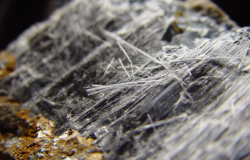Why Testing for Asbestos and Soil Contamination Is So Important
Asbestos—the mere mention of the word is enough to set alarm bells ringing and red lights flashing—so it should.
Testing for asbestos is especially important to assess a building for asbestos before any new work or demolition. If not, the consequences can be serious.
Read on to find out about friable and non-friable asbestos and soil contamination along with how they could affect your plans.
Friable v Non-Friable Asbestos & Soil Contamination
Managing asbestos contamination in the soil will have an impact on the current and future users of a particular site or building. We refer to friable material, soil for example, as that which contains more than one per cent asbestos that can easily get released into the atmosphere.
This is asbestos in its most dangerous form. You’d be able to crumble, pulverise or reduce it to a powder by applying the pressure of an ordinary human hand.
Non-friable material contains more than one per cent asbestos but is impossible to pulverise under hand pressure.
When there is friable asbestos found as a contaminant in the soil the following actions should happen:
- The area should become isolated and secured
- The soil should be continuously damp to prevent the release of fibres
- The engagement of qualified asbestos removal specialists
Testing for asbestos is about being 100 per cent sure whether you have asbestos or not and if you do, understanding whether it is friable or non-friable. The difference can equate to thousands of dollars in the costs of removal.
Why You Should Sit Up and Take Notice
Some of the stats around asbestos are quite staggering. For example, most buildings constructed before 1990 will contain asbestos. In fact, Australia still imports sheeting containing asbestos.
Mesothelioma is a kind of cancer that thrives in the lining that covers the outer surface of some of the body’s organs. There is usually a link with asbestos exposure.
Hundreds of Australians have been dying from the disease every year. Even though thousands more will contract Mesothelioma in the future, the crucial way to lower the chances of more deaths is to test for asbestos. Testing for asbestos should involve:
- An on-site audit of a property to identify all asbestos
- Sample extraction on site and analysis in a recognised laboratory
- A report that includes photographic evidence of areas containing asbestos
- Recommendations and necessary actions
- An asbestos management plan including warning labels and signage
- Staff training
- Regular future monitoring
What the Law Says
Work Health and Safety Legislation in every State and Territory declares that building owners and managers have to undertake asbestos inspections. This is to identify the presence, condition and health effects of all asbestos wherever it may be on their property.
As a general rule, where asbestos gets identified there needs to be a register and a management plan put into place. There are some exceptions, so check with us if you’re unsure.
Testing for asbestos means locating and harvesting a sample of suspected asbestos. This is a job for professionals. It’s illegal, for example, to send asbestos through the post so it’s not a job undertaken lightly.
Without knowing safe harvesting methods, you could be putting yourself and your staff at risk if you try to carry out any of the testing procedures yourself.
Identify Asbestos Today
You should always leave testing for asbestos to the experts. QBM offers fast, first-class professional asbestos inspections and reporting services at one cost-effective price.
We’re across all relevant legislation and will only test samples in a NATA-accredited laboratory. Get in touch with us today and get your next asbestos inspection in the diary.






